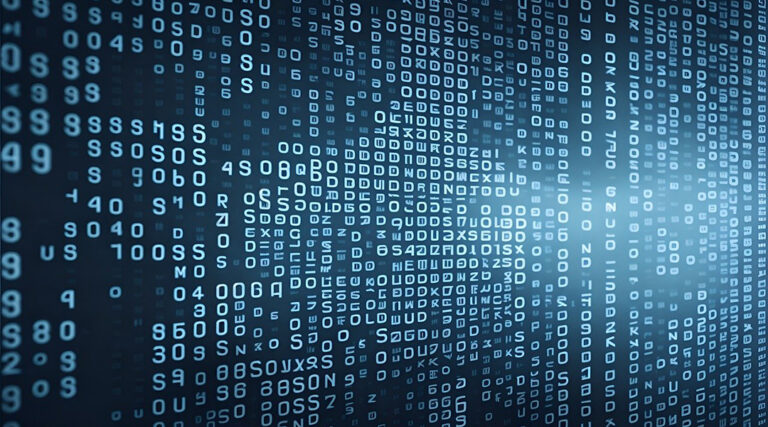Once relegated to theory, a newly discovered quantum object could be used to create new devices that will outpace modern electronics.
A new kind of quantum object called orbital angular momentum monopole has been identified that could revolutionize the emerging field of orbitronics, which leverages the rotational quantum states of electrons for next-generation computing devices that are faster, more efficient, and with dramatically lower power consumption.
As a result, orbitronics is seen as a potential successor to traditional electronics, where data is stored, transferred, and manipulated by controlling electric currents within transistors. As transistor sizes approach the atomic scale in order to fit more components onto a single computer ship, there will eventually be a limit where a transistor cannot become any smaller.
Orbitronics, on the other hand, offers a promising alternative by encoding information in the rotational movement of electrons as they move around their nuclei.
However, achieving this in practice has proven difficult. In most materials, electrons orbit their nuclei in opposite directions, canceling out their collective orbital angular momentum. Even when electromagnetic fields are applied to create a net orbital momentum, the resulting patterns are typically unstable and challenging to control.
What has been missing is a robust, stable configuration known as an “orbital angular momentum monopole,” a theoretically predicted configuration of multiple electrons that could make orbitronic data storage and processing both feasible and practical.
A very important step towards this was made in a recent study where scientists experimentally analyzed the properties of electron quantum states in two materials — one consisting of palladium and gallium, and the other of platinum and gallium — and found that both materials contain orbital angular momentum monopoles.
Chirality is key to orbitronics
The materials under question belong to a class of substances known as chiral topological semimetals, which possess unique properties that make them particularly promising for orbitronic applications.
Chiral materials lack mirror symmetry, meaning their structure has a natural “handedness” — either left- or right-handed — that influences the behavior of the particles inside them. Topological materials have electronic properties that are resilient to disturbances in the state of the material, such as the introduction of impurities or the influence exerted on the material by the environment.
This combination of chirality and topological protection that occurs in both materials in the current study makes them ideal candidates for studying exotic quantum states like orbital angular momentum monopoles.
“This offers a significant advantage to [the] materials because you don’t need to apply external stimuli to get [orbital angular momentum] textures — they’re an intrinsic property of the material,” Michael Schüler, group leader in the Center for Scientific Computing, Theory and Data at PSI, and assistant professor of physics at the University of Fribourg, and one of the leading authors of the study, said in a press release. “This could make it easier to create stable and efficient currents of [orbital angular momentum] without needing special conditions.”
Orbital angular momentum monopoles
An orbital magnetic monopole is a complex system involving many interacting electrons with similar velocities. The direction of their rotation is closely linked to both the speed and direction of their motion. Unlike other phenomena where electrons might be confined to specific positions, the electrons forming the monopole are delocalized, meaning their velocities are similar, but their positions in space vary. This delocalization makes studying these monopoles — or even confirming their existence — tricky.
This prompted the team to use a sophisticated technique called circular dichroism in angle-resolved photoelectron spectroscopy. This method involves shining circularly polarized light — meaning the electric and magnetic fields of the light wave rotate around the direction of its propagation — onto the material and analyzing the directions and velocities at which electrons are ejected.
The use of circularly polarized light is crucial because it also has a handedness — either right- or left-handed — that mirrors the chiral nature of the material, allowing researchers to probe the rotational properties of the electrons within.
By comparing the results from right- and left-handed polarized light, the scientists were able to uncover the elusive orbital angular momentum monopoles. Their findings mark the first experimental confirmation of these exotic configurations in any material.
A leap forward
The discovery of orbital angular momentum monopoles represents a significant step forward for both fundamental physics and the practical development of orbitronic devices. These monopoles could pave the way for stable, efficient currents of orbital angular momentum, a crucial requirement for storing and processing information in orbitronic systems.
However, while this discovery is an exciting advance, much work remains before orbitronic devices can become a reality. To be truly useful, scientists must find ways to reliably control the behavior of the rotational quantum states of electrons, even in materials that contain these monopoles. This level of control is essential for creating practical devices that outperform current electronic systems in speed and energy efficiency.
Looking ahead, the researchers suggest that further studies are needed to explore the potential of orbital angular momentum monopoles in other materials. Investigating different compounds could lead to the discovery of even more complex and versatile configurations that offer better control over electron rotation.
Additionally, theoretical work may reveal entirely new types of electron configurations that could further enhance the capabilities of orbitronics. These delocalized electron states could provide unprecedented control over information storage and transfer, bringing us closer to a revolution in computing technology.
Reference: Yun Yen, et al, Controllable orbital angular momentum monopoles in chiral topological semimetals, Nature Physics (2024). DOI: 10.1038/s41567-024-02655-1
Feature image credit: geralt on Pixabay












+ There are no comments
Add yours